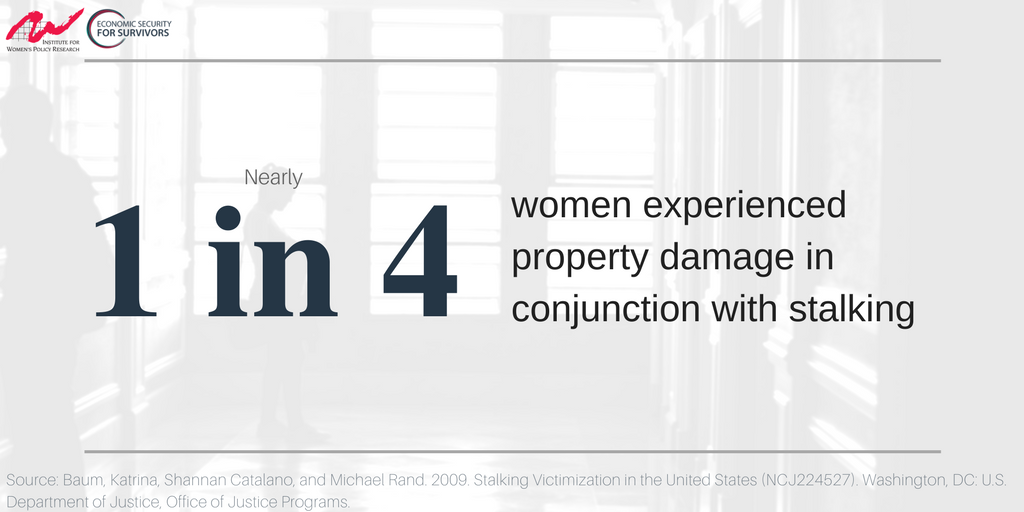This January marks the 15th observance of National Stalking Awareness Month. Stalking continues to affect nearly one in six women and more than one in 19 men in the United States in their lifetime. Research shows that the economic effects of stalking on survivors are long-lasting.

Financial Burden
The financial impacts of stalking are significant and often devastating. Victims of stalking report higher rates of on-the-job harassment, indirect job disruption, and indirect job performance interference than other victims of intimate partner violence (IPV), commonly resulting in lower productivity and lost wages. In addition, victims often incur a number of costs due to property damage and safety seeking measures. A number of studies examine the financial burden of stalking:
- Analysis of one nationwide survey of stalking victimization found that forty percent of stalking victims lost five or more days of work.
- Another study found nearly one in four victims (24.4 percent) experienced property damage in conjunction with stalking.
- Three in 10 stalking victims accrued out-of-pocket costs such as attorney fees, damage to property, child care costs, moving expenses, or changing phone numbers.
- Another study that interviewed 187 women who were recent stalking victims in south-eastern Pennsylvania found these victims incurred an median of $1,000 in costs (in 1998 dollars) due to moving expenses, losses in salary or having to forfeit tuition, property damage, legal fees, and taking measures to increase personal security.

The economic costs of stalking are compounded by the economic inequalities faced by specific populations, increasing vulnerability and limiting opportunities to seek safety and justice. For instance:
- In 2015, Black women earned 61.2 percent and Hispanic women earned 56.3 percent of White men’s median annual earnings.
- Women of color also saw large declines in median annual earnings from 2004-2014–Black women by 5.0 percent and Hispanic women by 4.5 percent.
- Women over the age of 65 are more likely than their male counterparts to live in poverty (11.3 percent, compared with 7.4 percent for men), and have nearly $20,000 less in annual total income than their male counterparts.
- Almost one in five (19.7 percent) immigrant women live in poverty, compared with 14.7 percent of U.S.-born women.
- Over one quarter (26.7 percent) of Native American women lived in poverty in 2014—the highest poverty rate among all racial/ethnic groups of women.
Next Steps
As advocates raise awareness during National Stalking Awareness Month, it is critical to look forward at ways we can continue to support those affected by stalking.
- Service providers can increase outreach by developing resources and programs to address the gap in public knowledge regarding how to identify stalking and how to access safety. Because stalking victims often need more financial support to relocate, service providers can establish flexible financial funds and build relationships with security companies and housing providers.
- Educational institutions including universities, schools, job training programs, and employers should have a clear policy on stalking that defines stalking behaviors and outlines victim reporting procedures and safety accommodations, such as no-contact orders, available resources for health support, and potential schedule changes.
- Providing victims with information about Crime Victim Compensation (CVC) and economic relief in the justice system will help support their future economic recovery.
Advocates, educational institutions, and employers all play a role in supporting victims’ independence and recovery from the costs of abuse, and these groups must recognize and respond to the economic barriers and costs victims face. For more recommendations on how policymakers and communities can promote economic security among stalking victims visit IWPR’s Economic Security for Survivors Project.

